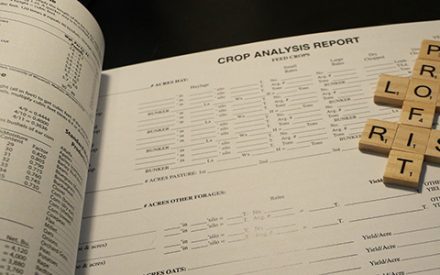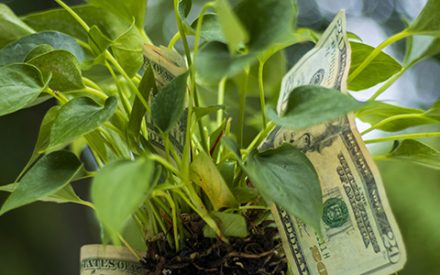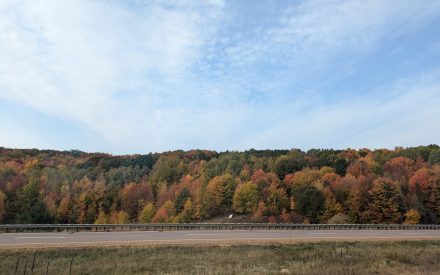Video Summary
In this video, Josh Bendorf, Climate Outreach Specialist with Extension and the Wisconsin State Climate Office, delivers the latest agricultural weather update for Wisconsin as part of the Badger Crop Connect series.
This August 14, 2025 edition covers the impacts of recent severe storms, rainfall totals, soil moisture conditions, crop progress, and upcoming weather forecasts. Stay informed on how weather trends are shaping the growing season across the state.
Resources
- Ag Weather Outlook for Wisconsin
- Wisconsin State Climatology Office
- Wisconet station locations
- August 2025 Flooding in SE Wisconsin
- August 9, 2025 Severe Weather Event (NWS)
- CoCoRaHS Gauges and Gauge Parts
Transcript
0:05
Thanks, Jordyn.
0:06
Good afternoon, everyone.
0:07
Like Jordyn said, my name is Josh Bendorf.
0:09
I work as the climate outreach specialist for Extension and the Wisconsin State Climate Office, so we’re good to go.
0:16
I’ll be giving your AG weather update as part of the Badger Crop Connect series today.
0:21
Just a reminder, this is a condensed version of our larger AG weather outlook for Wisconsin or AGWOW.
0:26
That will be coming out either later today or early tomorrow, so be sure to go to the Extension Crop and Soils website and check that out.
0:35
So our weather highlight for this past week, things were a little moist this past weekend.
0:41
That might be a little bit of an understatement for the southeast part of Wisconsin.
0:45
We had some torrential downpours and severe storms that impacted quite a few folks in the state of Wisconsin this past weekend.
0:53
We had some historic totals of anywhere from 5 inches to a foot of rainfall that fell overnight August 9th and 10th across southeastern Wisconsin with some localized totals reported in and around Milwaukee.
1:07
Some of the impacts were that rivers were hitting record crest, major flooding, in the city of Milwaukee.
1:12
I’ve seen several videos of water that was right up to the bridges or going over bridges.
1:17
You may have seen some of those as well.
1:18
So some pretty substantial impacts in and around the Milwaukee area impacting some events like the State Fair, Brewers games.
1:26
There were some who lost power as a result of these storms.
1:29
And you can read more about the impacts of this storm on our Wisconsin State Climate Office website.
1:34
That link there, which I believe will also be put in the chat where we wrote up a summary on these storms.
1:39
There were also, along with the heavy rain, there were also some other impacts like powerful winds.
1:45
The severe storms had some very strong winds associated with them.
1:49
I was caught in these as I was driving through the area on Saturday.
1:53
It did get pretty intense.
1:55
Wind gusts up to 55 miles an hour were recorded in Door County.
1:59
Some of the impacts, trees were knocked over, power lines.
2:03
A person was struck by lightning, unfortunately, and a water spout was spotted over Lake Winnebago.
2:07
and that link there, which I believe will also be put in the chat is the NWS Green Bay, their summary of this event and you can read more about that there.
2:18
And I want to point out that the CoCo Rahs program, which some of you may be involved with already, this is citizen science, your ability to report rainfall that you’re observing at your location.
2:30
They’re doing a special promotion right now in response to these really heavy rains that fell in Milwaukee during these severe storms where summer storms where precipitation amounts can be highly localized.
2:41
It’s really important to know, you know, to have a high density of rainfall measurements in a small area.
2:46
So CoCoRahs is offering a special promotion right now to get a discount on signing up for the program and getting your rainfall measuring equipment.
2:57
There’s a link there and a promo code which will be put in the chat.
3:00
So if you’re not involved with Coco Raz already, this is a good opportunity to get involved with that program.
3:06
Our seven day precip recap highest totals were in the Southern Tier of counties and a lot of this was from the weekend events, at least two inches widespread with some pockets of five inches or more.
3:17
And you can see those, those areas in and around Milwaukee, which had 10 plus inches kind of Milwaukee, Waukesha County, half inch to two inches for much of central and northern Wisconsin.
3:28
Those areas that you see, they’re shaded in green.
3:31
And then in far northwest Wisconsin, there were pockets of 1/2 inch or less.
3:37
So totals taper the further north that you got, 30 day precip total and percent average.
3:45
This is going back to July 13th.
3:47
150% or more of normal in the southeast and southwest.
3:51
Those areas in green, blue, purple shading there on the map on the right with totals of five inches or more above normal for for South Central and West central Wisconsin and then below normal for most of central and northern Wisconsin.
4:07
Looking at 2025 precipitation so far, most of the state is running very near to normal.
4:13
Those areas in yellow or light green are areas near to average.
4:17
And the more green or blue that you get on this map on the right, the more above average that your area is, or the most above average kind of an area around Marathon, Lincoln County, and the most below average in the far northwest part of the state where precipitation has been for most less than 20 inches since the beginning of 2025.
4:38
So what does this all mean for soil moisture?
4:40
This is the latest on NASA sport soil moisture model for the top 1m of soil, estimating how current soil moisture compares to what we would expect to see in mid August across Wisconsin.
4:52
We see near normal soil moisture levels in the top 1m of the soil across most of Wisconsin.
4:57
Those areas, they’re in Gray above normal levels across southern Wisconsin following that really high precipitation amount that we got over the weekend.
5:07
And then below normal levels remain in parts of the far northwest and northeast where I was just showing on the last slide.
5:12
Things have been drier over the past month and 2025 in general.
5:17
And the East Central and far SE remain below normal despite last week’s rainfall totals.
5:24
So plotting soil moisture at the at the various WiscoNet research farm sites.
5:29
These are our UW research farms comparing soil moisture currently to last week and one month ago.
5:37
We see those dark blue bars, some big jumps, especially in the South from that precipitation that we received over the weekend compared to last week.
5:46
And for the most part, totals are at or above where we were a month ago.
5:50
So not really a lot of change.
5:52
Things are for the most part looking pretty good for soil moisture and the USDA NASS maps also show this, showing that Wisconsin as of early this week was at 76 to 79% adequate topsoil subsoil moisture with some small change in the amount of short to very short.
6:13
13% of fields in the state reported as short or very short.
6:19
Looking now at the drought monitor, Wisconsin remains drought free with these rainfalls that we’ve gotten just some small increases and D1 or abnormal dryness both in the North Central part of Wisconsin and in the far northwest where things have been a bit drier.
6:36
Temperatures over the last 7 to 30 days and how they compare to normal.
6:40
Things have been warmer than normal pretty much across the board over the past week and since this time one month ago, anywhere from 2 to 6° above normal over the past week, especially the further north that you get. A half degree to two degrees above normal for most of the state since mid-july.
6:58
Those areas shaded in darker orange or red and then those areas that are in yellow or light green are areas that are within 1/2 a degree of normal.
7:09
So more average conditions, especially more so in the in parts of the West and northwest.
7:17
And what does this mean for growing degree day accumulation?
7:19
So with the warmer than average temperatures that we’ve been seeing over the past few weeks, we’re running well ahead of average for growing degree day accumulation.
7:27
Since May 1st range from anywhere kind of in that 1900 to 2000 growing degree day range in the southwest to 1300 to 1500 in the north and is running anywhere from 80 to over 100 growing degree days ahead of schedule.
7:46
Corn and soybean progress, both are running ahead of normal right now.
7:50
Silking is almost complete at 90%.
7:53
This is 2 percentage points ahead of the five year average.
7:57
And then soybean progress 73%, setting pods at 7% ahead of normal.
8:04
Some of you could comment in the chat if you’re seeing things that are different in your area, some impacts from the storms.
8:08
Doughing for corn is being reported in 36% of Wisconsin fields and I think there was like a small percentage that now is being reported as dented in the last NASS report.
8:20
And condition is still looking very good, about 80% good to excellent for corn and soybeans.
8:27
Looking ahead now to the next seven days, our precip forecast, we have another active week coming up here, more so in the north this time kind of flipping the script from what we saw over the weekend.
8:37
Now the north is looking to be the to have the higher precipitation chance over the next several days.
8:44
So there’s chances for rain on most days between today and Tuesday of next week with the highest chances further north that you get.
8:51
But right now, the forecast is showing some higher amounts for a good part of the state of Wisconsin.
8:58
Just just for reference, average precipitation for this week is a kind of right around 1 inch.
9:04
So looking to be either at that or above it for most of the state if this forecast from the Weather Service verifies.
9:11
And as always, check your local forecast for details on totals and timing for your location.
9:17
Looking two weeks out now for temperature and precipitation, there’s a higher probability of cooler than normal temperatures for all of Wisconsin.
9:27
Not a strong lean by any means, kind of a 40-50% probability that it’s going to be cooler than normal, but that’s pretty much for the whole state of Wisconsin.
9:35
And then precipitation is leaning slightly towards below normal.
9:39
Excuse me, in the eastern half of the state.
9:42
Excuse me with near normal lean the further north and West that you get and looking ahead now through the end of October, and I’ll just put a caveat on this outlook is getting a little dated by this point July 17th.
9:59
There should be a new one of these coming out fairly soon for September through November.
10:04
But just to review, you know, what we’re looking at here as we’re headed into the remainder of summer and into the first part of fall is that temperatures are leaning towards above normal statewide with precipitation uncertainty in the east and South with a slight lean towards below normal in the north and West.
10:22
And so with that, that’s all all I have.
10:24
I’ll leave our contact information up here for a minute.
10:27
But again, be sure to check out the AGWOW for this week when it’s released later today or tomorrow for more details.
10:34
I’ll take any questions if there are any.
10:38
I don’t see any questions, but we’ll let you know if any come up.
10:43
Thank you very much, Josh.
10:44
That’s yeah, Thank you.
10:45
Great information, especially with our topic this week.
10:48
So really appreciate it.
Badger Crop Connect
Timely Crop Updates for Wisconsin
Second and fourth Thursdays 12:30 – 1:30 p.m.
Live via Zoom

 ▶ Fall 2025 Financial Assistance for Producers
▶ Fall 2025 Financial Assistance for Producers ▶ Fall 2025 Ag Policy Update
▶ Fall 2025 Ag Policy Update ▶ Fall 2025 Corn and Soybean Market Outlook
▶ Fall 2025 Corn and Soybean Market Outlook ▶ November 6 Ag Weather Outlook for Wisconsin
▶ November 6 Ag Weather Outlook for Wisconsin


